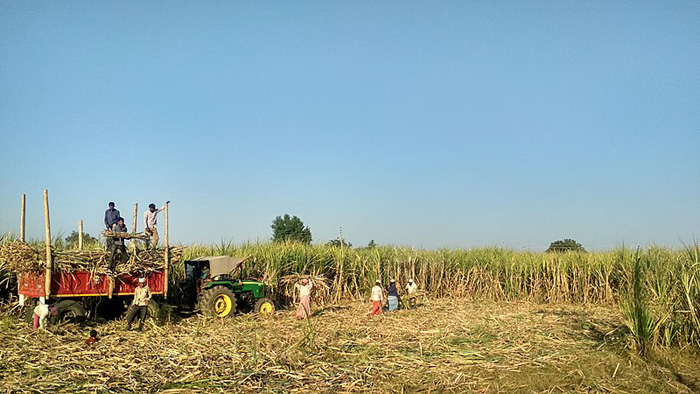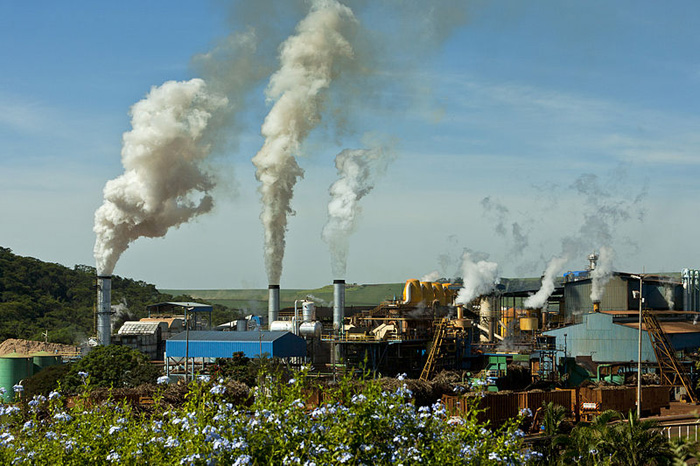
Because of the large amount of wastewater produced throughout manufacturing and the possible environmental impact, wastewater treatment is of the utmost importance in the sugar industry. Nutrients, suspended solids, organic matter, and occasionally hazardous chemicals are common components of sugar mill wastewater. In order to reduce pollutants and adhere to regulations, efficient treatment procedures are required.
Characteristics of Sugar Industry Wastewater
The numerous steps in sugar production—from sugarcane or sugar beet extraction and purification to refining—lead to massive amounts of wastewater with distinct characteristics. The primary characteristics of sugar industry wastewater are as follows:
- Toxic Compounds
- Toxins
The agricultural chemicals applied to the raw materials and the processing chemicals employed determine the presence of potentially harmful substances.
- High Temperature
- Temperature
Because hot water and steam are used in different parts of the sugar manufacturing process, wastewater temperatures can be somewhat high.
- High suspended solids
- Total suspended solids
Soil, fine bagasse particles, and other sugarcane or beet impurities are among the many suspended solids found in the wastewater.
- Alkalinity or acidity
- pH Levels
Chemicals used in processing (such as sulfur dioxide or lime) determine the pH of sugar industry wastewater, which can range greatly from acidic to alkaline.
- Presence of inorganic compounds
- Inorganic Salts
Processing chemicals and raw materials such as sulfates and chlorides may contribute inorganic salts to wastewater.
- High organic content
- Chemical oxygen demand
Similarly, due to the high chemical oxygen demand levels, some organic substances are biodegradable while others are not.
- Biochemical oxygen demand
The inclusion of organic matter, such as organic acids, proteins, and sugars, typically causes wastewater from the sugar industry to have a high biochemical oxygen demand.

- Smell and color
- Color
Tannins, melanoidins, and other colorants found in sugarcane and beet processing wastewater typically give it a black or even dark brown color.
- Smell
The presence of anaerobic conditions and decaying organic matter in wastewater has the potential to release a strong and nasty smell.
- Presence of microorganisms
- Microbial Load
The abundance of yeast, fungi, and bacteria in wastewater is a direct result of its high organic content.
- Nutrient Content
- Nitrogen and phosphorus
If the wastewater is not treated before being dumped into bodies of water, it could contribute to eutrophication. This is due to the high levels of nutrients it contains, such as nitrogen and phosphorus.
- Other Pollutants
- Heavy Metals
Heavy metals, which are present in soil or some machines, might end up in wastewater.
Sources of Wastewater in the Sugar Industry
Wastewater is produced at several points in the sugar industry’s production cycle. Some of these sources are:
- Milling and Extraction:
- Milling Operations
Juice is extracted from cane with the help of milling water. Imbibition water, which is used to aid in juice extraction, is one example.
- Cane Washing
The water used to wash sugarcane removes any impurities before it is processed.
- Juice Clarification:
- Lime Treatment
The lime clarifying procedure uses it as a solvent to extract contaminants from juice.
- Juice Heating
Cane juice that has been heated and clarified will eventually condense into water and steam.
- Evaporation:
- Condensates
As the juice evaporates, the water vapor condenses, turning it into syrup.
- Cooling Water
Condensed vapors and water are used for cooling.
- Crystallization:
- Mother Liquor
This is the syrup’s leftover liquid after extracting sugar crystals. It has dissolved sugars and other contaminants.
- Centrifugation:
- Wash Water
This is the water utilized to rinse the sugar crystals during centrifugation.
- Filter Cake Processing:
- Press Water
It acts as a solvent when the filter cake is pressed to extract juice while filtering solid waste (mud, bagasse, etc.).
- Equipment Cleanup:
- Cleaning-In-Place Systems
Water is used to clean pipes, tanks, and other equipment.
- Cooling Systems:
- Heat Exchanger Cleaning
This is cleansing water for condensers and heat exchangers.
- Cooling Tower Blowdown
Cooling tower discharge water is used to control salt and impurity concentrations.
- Miscellaneous:
- Domestic Wastewater
This is the wastewater that runs through the kitchens, restrooms, and other areas where employees are housed.
- Laboratory Waste
Chemicals and water are used in the testing and quality control processes.
Benefits of Wastewater Treatment in the Sugar Industry
Numerous factors, including social, economic, and ecological advantages, make wastewater treatment an absolute necessity in the sugar industry. Some important benefits include the following:
Social Advantages
- Regulatory Compliance:
- Meeting Legal Standards
Proper treatment helps to avoid legal complications and promote sustainable industrial practices. This guarantees compliance with ecological regulations.

- Community Relations:
- Better Reputation
Businesses that invest in wastewater treatment are perceived to care about the environment and do their part to protect it. This can help them gain favor with stakeholders and the general public.
- Public Health:
- Minimized Disease Risk
When wastewater is treated well, public health and healthcare expenditures are both enhanced, as the likelihood of waterborne diseases is reduced.
Economic Advantages
- Energy Efficiency:
- Decreased energy costs
The sugar industry can cut its energy bills by using biogas, a byproduct of wastewater treatment.
- Resource Use:
- By-product Use
Sludge and other wastewater treatment by-products are ideal for energy generation or soil amendment, turning waste into something useful.
- Cost Savings:
- Lower disposal costs
Properly treated wastewater allows you to spend less on fines and regulatory compliance for untreated wastewater discharge.
- Decreased water use
Reusing water may reduce the costs associated with acquiring and treating water.
Ecological Advantages
- Energy Generation:
- Biogas Production
Methane, or biogas, is a byproduct of anaerobic treatment procedures that has the potential to replace fossil fuels in the energy sector.
- Resource Recovery:
- Nutrient Recovery
In order to promote a circular economy, wastewater treatment can recover nutrients like phosphorous and nitrogen for use as fertilizers.
- Water Reuse
There is less of a need for new water because the sugar mill can reuse treated water for multiple operations.
- Contamination Decrease:
- Reduces soil pollution.
Treating wastewater can protect your soil’s quality and agricultural productivity from the leaching of dangerous substances.
- Reduces water contamination
Wastewater treatment plants play an important role in minimizing the release of suspended solids, nutrients, and organic matter into aquatic environments. This prevents aquatic habitats from degrading.
The sugar industry’s wastewater treatment process has numerous advantages. This includes improving public health, recovering resources, protecting the environment, and saving money. These benefits are in line with global sustainability objectives and make substantial contributions to sustainable industrial practices.
Conclusion
For the sugar industry to treat wastewater effectively, a mix of old and new methods adapted to each wastewater’s unique properties is required. Continuous evaluation, process optimization, and adherence to environmental requirements are vital to ensuring the sustainability and efficiency of the treatment process.
